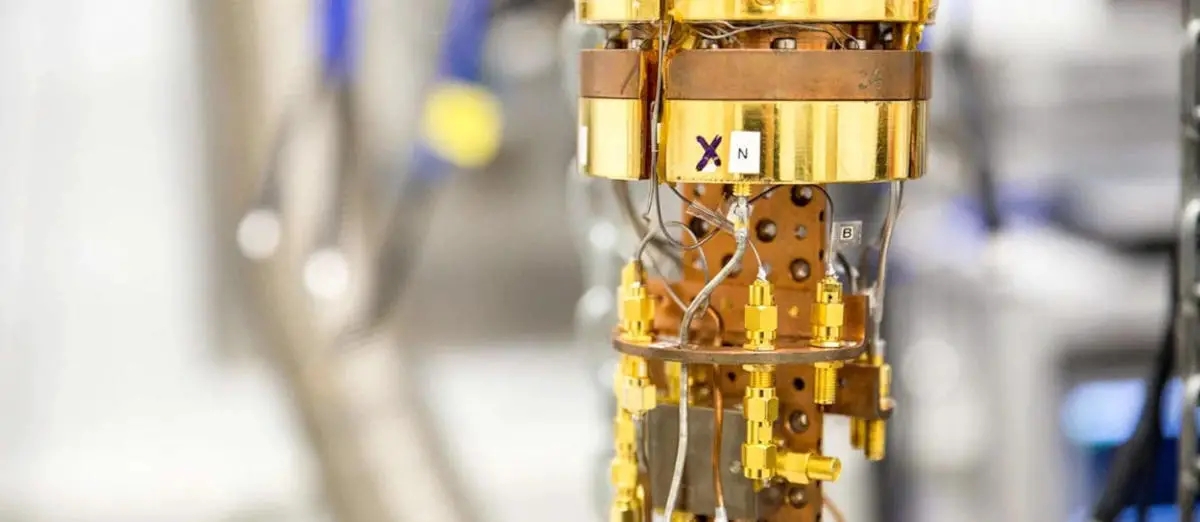博文
量子突破:对量子湍流的新认识
||
量子突破:对量子湍流的新认识
诸平
据英国兰卡斯特大学(Lancaster University)2023年3月25日提供的消息,量子突破:对量子湍流的新认识(Quantum Breakthrough: A New Understanding of Quantum Turbulence)。介绍了由英国、芬兰和以色列的研究人员组成的研究团队,使用了一种独特的旋转低温恒温器(图示),已经证明了量子湍流中的能量耗散,从而提供了对从微观到行星的各种尺度的湍流的见解。相关研究结果于2023年3月2日已经在《自然物理》(Nature Physics)杂志网站发表——J. T. Mäkinen, S. Autti, P. J. Heikkinen, J. J. Hosio, R. Hänninen, V. S. L’vov, P. M. Walmsley, V. V. Zavjalov, V. B. Eltsov. Rotating quantum wave turbulence. Nature Physics, Published: 02 March 2023. DOI: 10.1038/s41567-023-01966-z. https://www.nature.com/articles/s41567-023-01966-z
参与此项研究的除了来自英国兰卡斯特大学(Lancaster University, UK)的研究人员之外,还有来自英国伦敦大学(University of London, Egham, UK)、英国曼彻斯特大学(University of Manchester, UK);芬兰阿尔托大学(Aalto University, Finland)、芬兰赫尔辛基的芬兰气象研究所(Finnish Meteorological Institute, Helsinki, Finland)以及以色列雷霍沃特的魏茨曼科学研究所(Weizmann Institute of Science, Rehovot, Israel)的研究人员。
该研究结果展示了对波状运动如何将能量从宏观长度尺度转移到微观长度尺度的新理解,他们的结果证实了关于能量如何在小尺度上耗散的理论预测。
奥蒂博士(Dr. S. Autti)说:“这一发现将成为大型量子系统物理学的基石。”
大规模的量子湍流(Quantum turbulence)——例如围绕移动的飞机或轮船的湍流——很难模拟。在小尺度上,量子湍流与经典湍流不同,因为量子流体的湍流被限制在称为涡流(vortice)的线状流动中心周围,并且只能取特定的量子化值(quantized values)。
这种间隔尺寸(granularity)使得量子湍流在理论中更容易捕捉,而且人们普遍认为,掌握量子湍流也将有助于物理学家理解经典湍流。在未来,从量子水平开始对湍流的更好理解,可以在流体和气体(如水和空气)的流动和行为是关键问题的领域改进工程。
上述论文的第一作者、来自阿尔托大学的杰雷·马基宁博士(Dr. Jere Mäkinen)说:“我们对湍流基本组成部分的研究可能有助于指明方向,以更好地理解湍流中不同长度尺度之间的相互作用。了解经典流体将帮助我们做一些事情,比如改善车辆的空气动力学,更准确地预测天气,或控制管道中的水流。理解宏观湍流在现实世界中有大量潜在用途。”
奥蒂博士说,量子湍流对科学家来说是一个具有挑战性的问题。“在实验中,围绕单个涡旋形成的量子湍流几十年来一直难以捉摸,尽管整个领域的物理学家都在研究量子湍流,试图找到它。这包括研究超流体和量子气体的人员,例如原子玻色-爱因斯坦凝聚 (Bose-Einstein Condensates简称BEC)。这一过程背后的理论机制被称为开尔文波级联(Kelvin wave cascade)。在目前的论文中,我们证明了这种机制的存在并按照理论上的预期发挥作用。这一发现将成为物理学或大型量子系统的基石。”
由资深科学家弗拉基米尔·叶利佐夫(Vladimir Eltsov)领导的研究小组在阿尔托低温实验室(Low Temperature Laboratory at Aalto)的独特旋转超低温冰箱中研究了氦-3(Helium-3, 3He)同位素中的湍流。他们发现,在微观尺度上,所谓的开尔文波(Kelvin waves)通过不断将能量推向越来越小的尺度来作用于单个涡流——最终导致能量耗散发生的尺度。
阿尔托大学的杰雷·马基尼博士说:“能量如何在超低温下从量子化涡流中消失的问题在量子湍流的研究中一直至关重要。我们的实验装置首次在现实世界中展示了开尔文波将能量转移到耗散长度尺度(dissipative length scales)的理论模型。”
该团队的下一个挑战是使用浸没在超流体(superfluids)中的纳米级设备来操纵单个量子化涡流(single quantized vortex)。
这项工作得到了欧洲研究委员会(European Research Council简称ERC)欧盟地平线2020研究和创新计划{ European Research Council (ERC) under the European Union’s Horizon 2020 research and innovation programme (grant agreement no. 694248); grant agreement no. 824109 (European Microkelvin Platform)}、芬兰科学院(Academy of Finland project no. 332964)、英国工程和自然科学研究委员会及科学与技术设施委员会{ UKRI EPSRC (EP/W015730/1) and STFC (ST/T006773/1)}、詹妮和安蒂·维胡里基金会(Jenny and Antti Wihuri Foundation via the Council of Finnish Foundations)以及美以两国科学基金会(NSF-BSF grant no. 2020765)的资助。
上述介绍,仅供参考。欲了解更多信息,敬请注意浏览原文或者相关报道。
Turbulence under strong influence of rotation is described as an ensemble of interacting inertial waves across a wide range of length scales. In macroscopic quantum condensates, the quasiclassical turbulent dynamics at large scales is altered at small scales, where the quantization of vorticity is essential. The nature of this transition remains an unanswered question. Here we expand the concept of wave-driven turbulence to rotating quantum fluids where the spectrum of waves extends to microscopic scales as Kelvin waves on quantized vortices. We excite inertial waves at the largest scale by periodic modulation of the angular velocity and observe dissipation-independent transfer of energy to smaller scales and the eventual onset of the elusive Kelvin wave cascade at the lowest temperatures. We further find that energy is pumped to the system through a boundary layer distinct from the classical Ekman layer and support our observations with numerical simulations. Our experiments demonstrate a regime of turbulent motion in quantum fluids where the role of vortex reconnections can be neglected, thus stripping the transition between the classical and the quantum regimes of turbulence down to its constituent components.
https://blog.sciencenet.cn/blog-212210-1382008.html
上一篇:发现了新的凝血调节机制
下一篇:科学家们发现了一种简单的方法来制造原子薄的金属层
